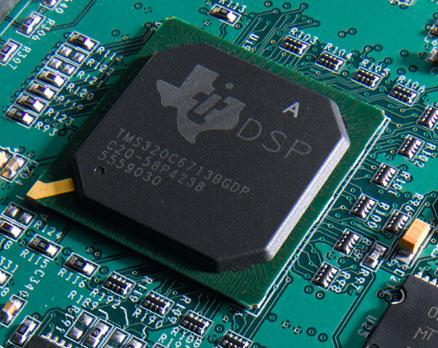The Difference Between a DSP Microcontroller and a Processor?
DSP processors and microcontrollers are microprocessors that are programmed to execute specific tasks or applications as assigned by their user. Though they are different, they both operate by manipulating a device’s binary data. DSP is an abbreviation for digital signal processing.It defines any signal processing that is carried out on an information signal or digital signal, and aims at improving or modifying signals. As such, it is branded by the representation of discrete units like discrete frequency, discrete time and discrete domain signals. DSP features include subfields like radar signal processing, communication signal processing, digital image processing and sensor array processing.

What is a DSP Processor?
A DSP processor is a specialized microprocessor whose architecture is optimized to meet digital signal processing operational needs. Its main objective is to measure, filter and compress digital or analog signals by converting the signals from a typical analog signal to an acceptable digital form. It utilizes a digital-to-analog converter to convert signals. However, its output signal is a real-world analog signal that also requires a digital-to-analog converter.

The DSP algorithms run on different platforms like standard computers, general purpose microprocessors, purpose-built hardware like ASICs (application specific integrated circuits) and FPGAs (field programmable gate arrays), special processors known as digital signal processors (DSPs), digital controllers, graphics processing applications like video or image, and traditional DSP steam processing. Though digital signal processing is quite complex in nature, it offers numerous advantages like data compression, error detection and correction of transmission.
What is a DSP Microcontroller?
Abbreviated as MCU, µC or uC, a DSP microcontroller is a small computer that contains programmable output/input peripherals, a processor core, and memory on a single integrated circuit. It may also include a small amount of RAM and program memory. Microcontrollers are mainly designed for use in embedded applications. They can be used in devices and products that are controlled automatically like implantable medical devices, office machines, automobile engine control systems, toys, appliances and power tools among other embedded systems.
Microcontrollers are economical when used in digital control processes and devices compared to utilizing a design that contains separate input/output devices, microprocessor, and memory. Mixed-signal microcontrollers are commonly used because they integrate all analog components that control non-digital electronic systems. However, most microcontrollers contain built-in DSP like commands and chip co-processors that facilitate the streaming of data and other DSP operations.
Differences between DSP Processors and Microcontrollers
At the highest level, DSP processors are special microprocessors whose architecture is optimized to meet digital signal processing operational needs. Microcontrollers are small computers operating on single integrated circuits and include program memory.
DSP processors lack a flash program memory so software must be loaded into them. On the other hand, microcontrollers contain non-power of program memory that is erasable and may have EPROM store capabilities. Digital processors perform integer mathematical operations faster while microcontrollers lack the required hardware. Processors tend to be faster when handling floating point operations that require software in microcontrollers.
Processors are designed to operate as input/output devices containing fast calculating machinery while microcontrollers are designed to be multi-feature devices with different ways of interfacing with the world. Microcontrollers can be operated on test boards but processors require a properly designed board to work flawlessly.